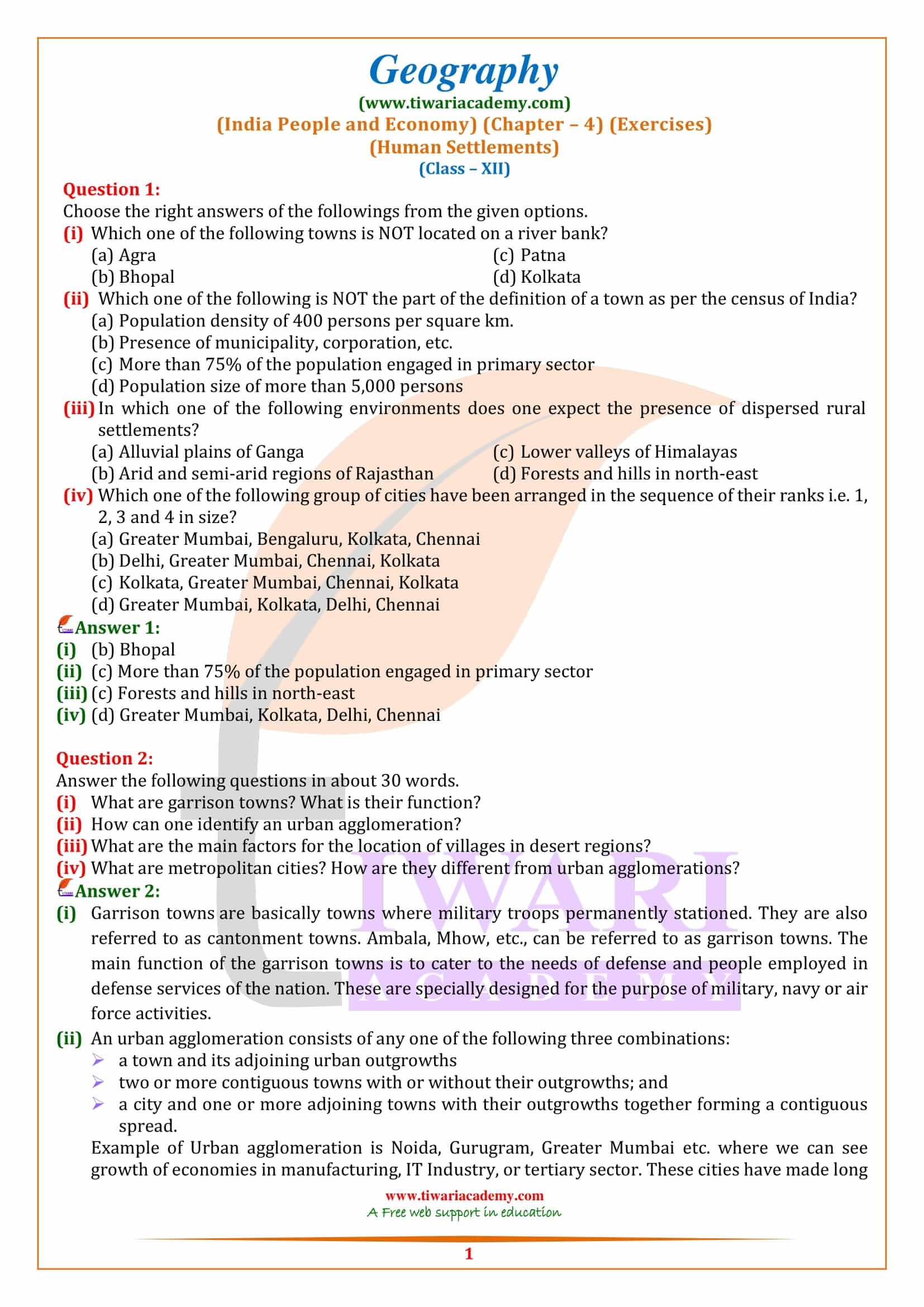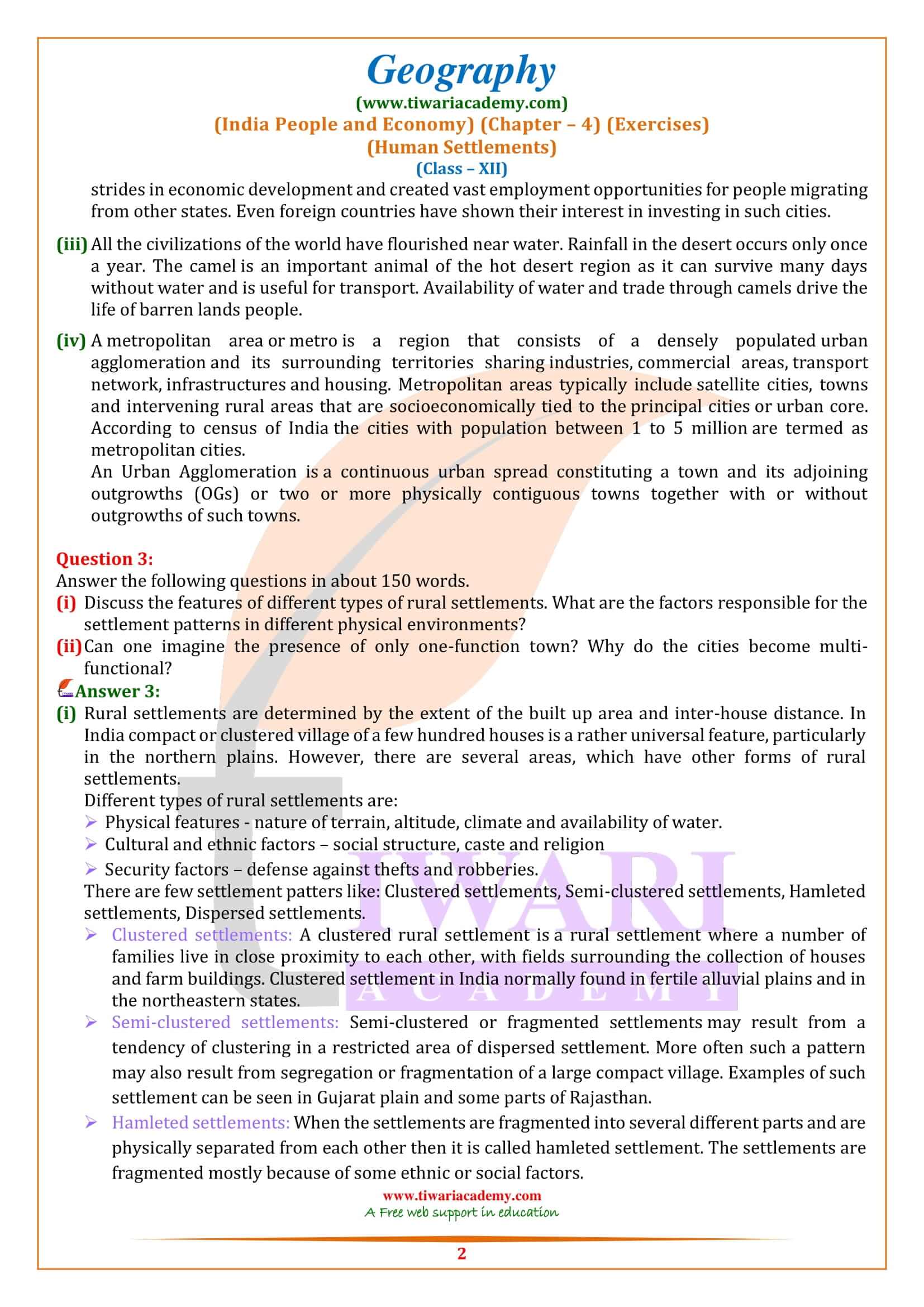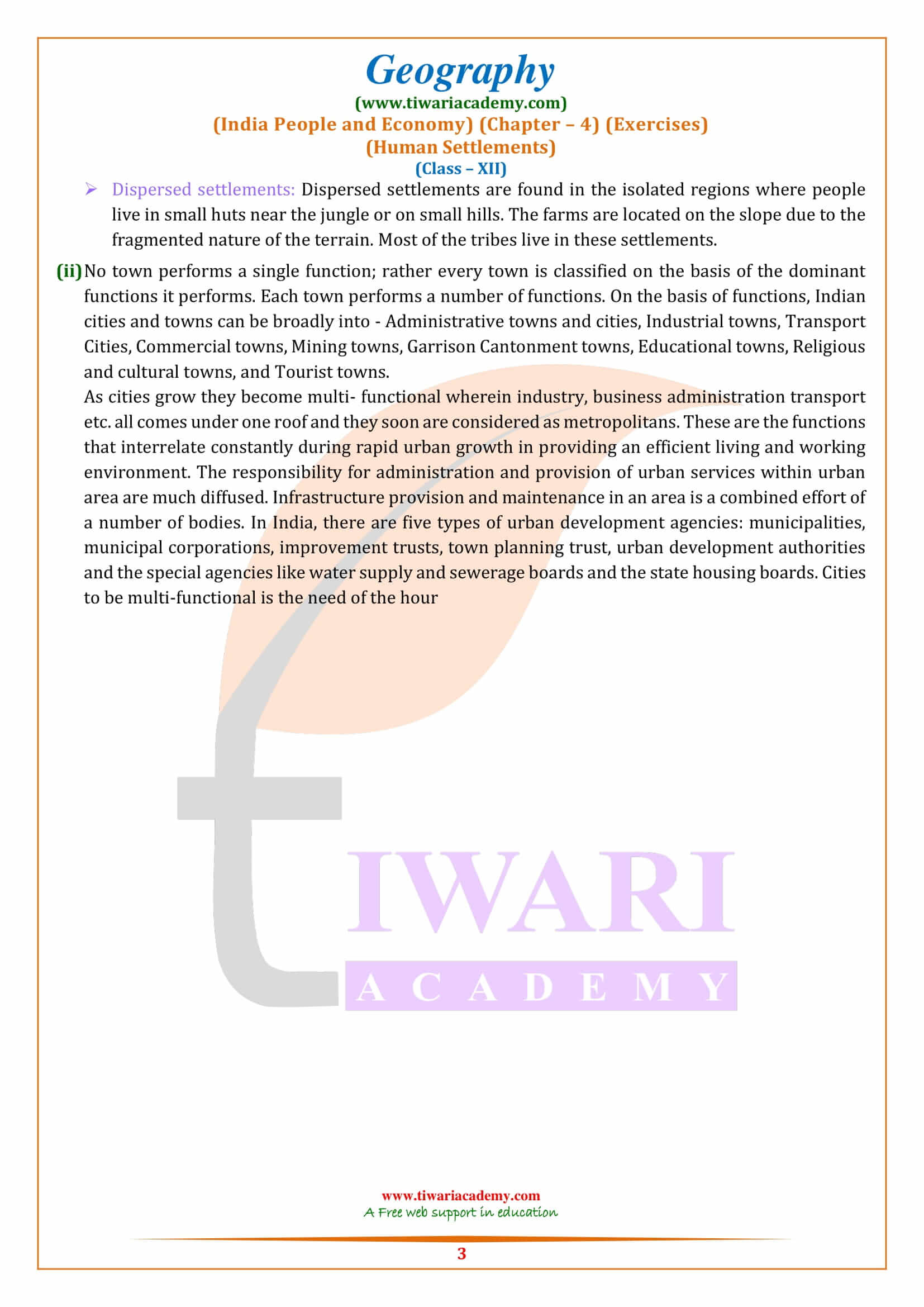NCERT Solutions for Class 12 Geography Chapter 4 Human Settlements in Hindi and English Medium updated and modified for session 2024-25. Get here extra important questions of class 12 Geography chapter 4 of India People and Economy Unit II with suitable answers.
NCERT Solutions for Class 12 Geography Chapter 4
Class 12 Geography Chapter 4 Human Settlements Question Answers
What are garrison towns? What is their function?
Garrison towns are basically towns where military troops permanently stationed. They are also referred to as cantonment towns. Ambala, Mhow, etc., can be referred to as garrison towns. The main function of the garrison towns is to cater to the needs of defense and people employed in defense services of the nation. These are specially designed for the purpose of military, navy or air force activities.
How can one identify an urban agglomeration?
An urban agglomeration consists of any one of the following three combinations:
- a town and its adjoining urban outgrowths
- two or more contiguous towns with or without their outgrowths; and
- a city and one or more adjoining towns with their outgrowths together forming a contiguous spread.
Example of Urban agglomeration is Noida, Gurugram, Greater Mumbai etc. where we can see growth of economies in manufacturing, IT Industry, or tertiary sector. These cities have made long strides in economic development and created vast employment opportunities for people migrating from other states. Even foreign countries have shown their interest in investing in such cities.
Class 12 Geography Chapter 4 MCQ
Which one of the following towns is NOT located on a river bank?
Which one of the following is NOT the part of the definition of a town as per the census of India?
In which one of the following environments does one expect the presence of dispersed rural settlements?
Which one of the following group of cities have been arranged in the sequence of their ranks i.e. 1, 2, 3 and 4 in size?
What are the main factors for the location of villages in desert regions?
All the civilizations of the world have flourished near water. Rainfall in the desert occurs only once a year. The camel is an important animal of the hot desert region as it can survive many days without water and is useful for transport. Availability of water and trade through camels drive the life of barren lands people.
What are metropolitan cities? How are they different from urban agglomerations?
A metropolitan area or metro is a region that consists of a densely populated urban agglomeration and its surrounding territories sharing industries, commercial areas, transport network, infrastructures and housing. Metropolitan areas typically include satellite cities, towns and intervening rural areas that are socioeconomically tied to the principal cities or urban core. According to census of India the cities with population between 1 to 5 million are termed as metropolitan cities.
An Urban Agglomeration is a continuous urban spread constituting a town and its adjoining outgrowths (OGs) or two or more physically contiguous towns together with or without outgrowths of such towns.
Can one imagine the presence of only one-function town? Why do the cities become multi-functional?
No town performs a single function; rather every town is classified on the basis of the dominant functions it performs. Each town performs a number of functions. On the basis of functions, Indian cities and towns can be broadly into – Administrative towns and cities, Industrial towns, Transport Cities, Commercial towns, Mining towns, Garrison Cantonment towns, Educational towns, Religious and cultural towns, and Tourist towns.
As cities grow they become multi- functional wherein industry, business administration transport etc. all comes under one roof and they soon are considered as metropolitans. These are the functions that interrelate constantly during rapid urban growth in providing an efficient living and working environment. The responsibility for administration and provision of urban services within urban area are much diffused.
Infrastructure provision and maintenance in an area is a combined effort of a number of bodies. In India, there are five types of urban development agencies: municipalities, municipal corporations, improvement trusts, town planning trust, urban development authorities and the special agencies like water supply and sewerage boards and the state housing boards. Cities to be multi-functional is the need of the hours.





